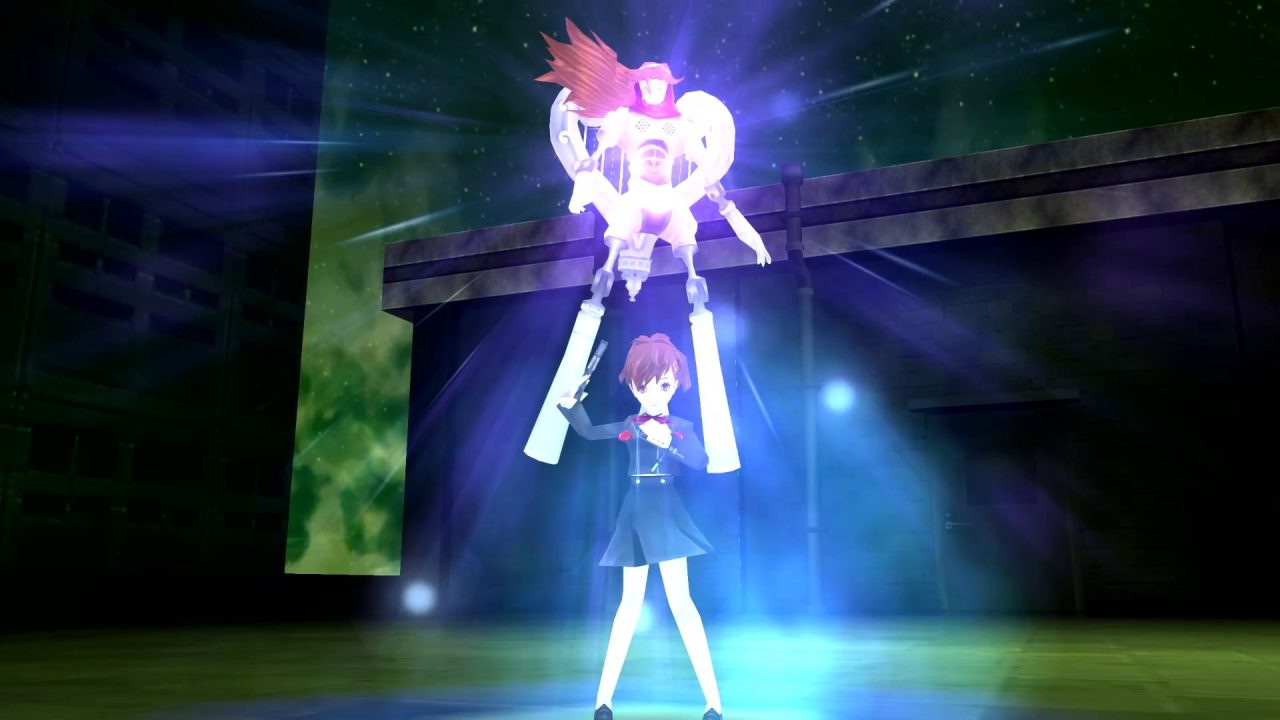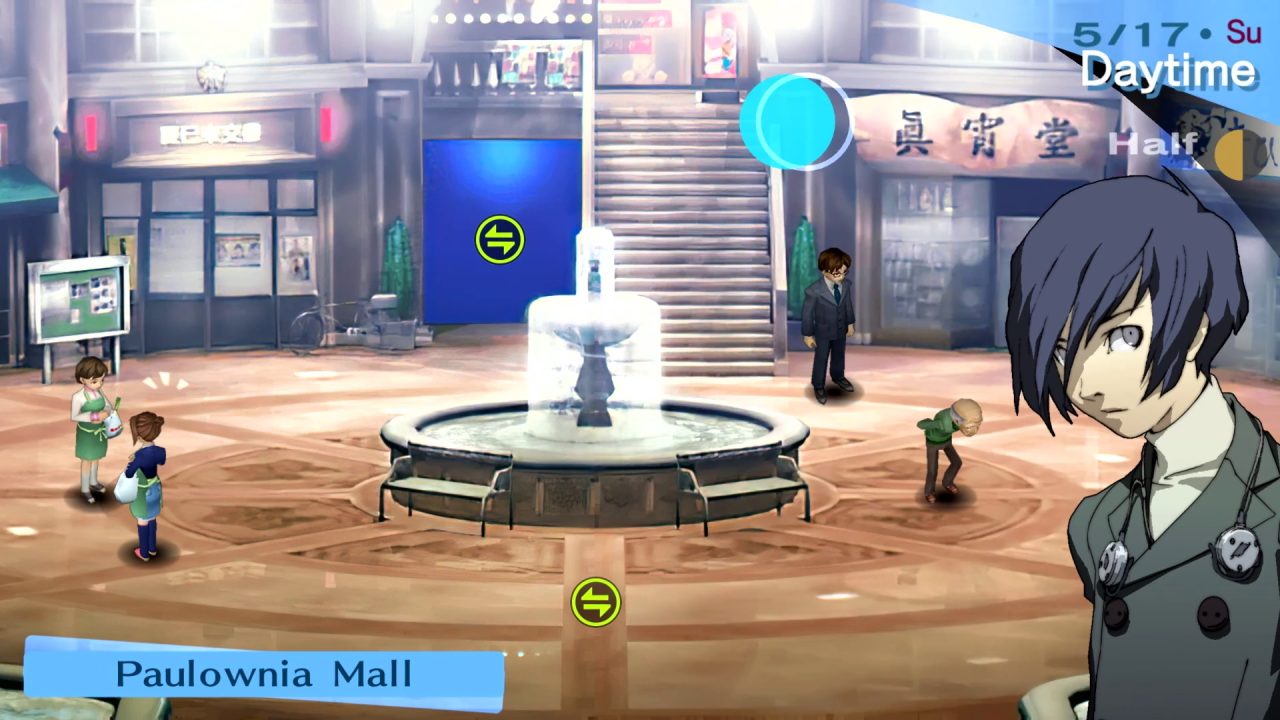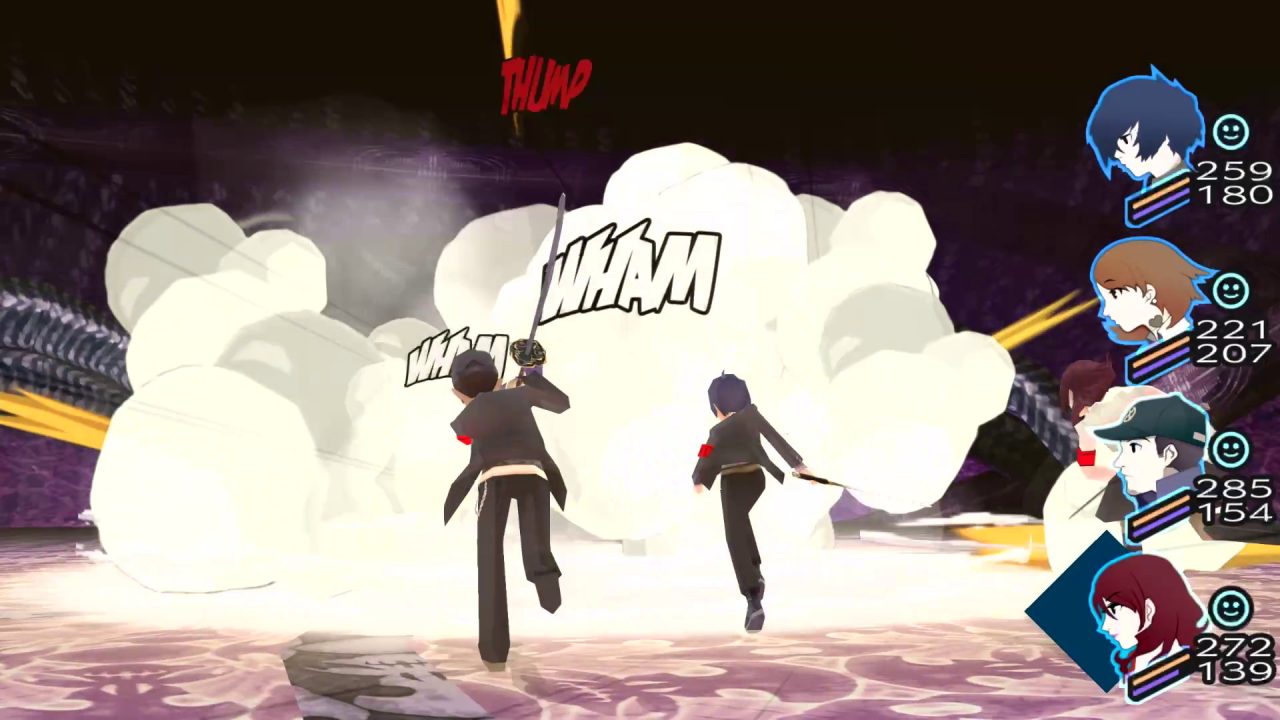Persona 5 was a major hit and raised the profile of its own series and parent franchise, Shin Megami Tensei, as a whole. Obviously, several games came before (more than four, actually), but the series first garnered critical acclaim and a cult following with Persona 3 (including several awards from RPGFan). The unique hybrid of high-school life-sim and a more traditional JRPG base was first released on the PS2 in 2006 in Japan and in 2007 elsewhere. Persona 3 Portable was one of several upgraded versions of the original game, and it’s fantastic that Atlus is re-releasing both 3 and 4 on modern platforms to make them playable for those who don’t have a PSP or Vita lying around.
Many people remember high school as a form of dungeon, but in Persona 3 Portable, Gekkoukan High is a literal dungeon. As a transfer student to this school in Iwatodai, a town built on the artificial Tatsumi Port Island, you come to find many strange things before you even get off the train. In typical Persona fashion, you befriend a group of fellow teens who can summon great power from within themselves, which manifests as their Persona, giving them the ability to fight the demonic Shadows plaguing the town. During the Dark Hour, the time between days, Gekkoukan transforms into Tartarus, a constantly shifting, seemingly endless tower, and it’s up to you and your friends to protect the city, Japan, and the world.
The new release of Persona 3 Portable seems to be a faithful transfer of the game onto modern platforms, but the “portable” aspect doesn’t apply unless you’re playing it on a Switch or a Steam Deck. There are some improvements from the PS2 versions in Portable, namely the second path that allows you to play as a female along with the original male protagonist and some visual upgrades. Still, it’s debatable whether this is the best version of the game. A few things were lost from the original and FES releases — most prominently, the excellent anime cutscenes, which were a treat. There are also a few changes to the gameplay that make it a bit easier and more accessible than the original, though there are higher difficulty levels for the experts.

But if you’ve never played either of the PS2 versions of Persona 3, you remain none the wiser. For being a port from the PSP, there wasn’t much that would hinder a successful transfer to the bigger screen. Much of the game unfolds in a style similar to a visual novel, with characters directly controllable while in Tartarus and other exploration done on large overhead screens with a cursor. Thankfully, the character portraits are memorable and beautifully expressive. Inside Tartarus, the characters are as crisp as they’ll ever be, thanks to the better hardware, and the Salvador Dali-inspired visuals are preserved in all their creepiness. The framerate probably doesn’t need to be as ridiculously high as it is, but animations are remarkably smooth. And load times are a thing of the past.
Let’s be real; the premise of Persona 3 Portable is ridiculous. After midnight, people transmogrify into coffins while demonic Shadows roam free to turn townspeople into emotional zombies? There must be some odd nightlife in Japan for the writers to have drawn inspiration from. The aesthetic is a throwback to 2000s emo culture in all of its glory, and glorious it is. I went to a My Chemical Romance concert last year, so maybe that scene is making a comeback. I love the rich, horror-tinged atmosphere of the Persona games, and Persona 3 Portable may be the most unrestrained of them all.
Despite the weirdness of the Shonen-infused story, Persona 3 Portable is lent emotional weight by its characters, who are grounded by contrast. The high school kids behave as you’d expect high school kids would. They’re impulsive, they sometimes have embarrassingly bad thoughts, and they wrap up their identities in their extracurricular activities to unhealthy degrees. Persona 3 Portable captures the dark side of high school, which can be just as horrifying as monsters consuming the city. The human side of the narratives is dynamic, taking some dark routes as characters seek fleeting redemption after tragedy invariably strikes.
Every new revelation thrown your way hits like a bomb. Persona 3 Portable is an enduring story about confronting and conquering existential fears and, for god’s sake, not forgetting to live, whatever that may mean to an individual. It’s one of those experiences that makes you feel the weight of reality, and you might come out of it with a different outlook than before you went in. A story confronting a subject as cheery as death rarely offers something meaningful without diving into nihilism, which Persona 3 Portable easily could have done. And its meaning only seems to grow as time and the world go on, especially as today’s news headlines begin to resemble those in the game.

If there’s one aspect of the Persona series that’s near and dear to fans, it’s the characters, the memories of whom are seared into our brains and hearts. Persona 3 Portable’s are no exception, and this cast may be the most colorful of all. Koromaru is the best boy, a dog who can summon Personas and has an emotional backstory. Not only can you pet him, but you can take him on walks, too. Aigis is an android with an extra option in combat. And Ken is an elementary school student, brilliant for his age, who can also wield the power of Persona. Some of the other characters you can form social links with aren’t always appealing to be around at first, but I eventually grew a fond appreciation for all of them as they struggled through difficult life stages. Playing as the girl protagonist also offers twists on the story and world that make it worthwhile for those who have only played the original version.
Unfortunately, amid a few other problematic elements, the one transphobic scene remains. It is toned down and subtler from previous versions but still glaringly present. There’s no excuse at this point for not removing the scene. The writers were apparently oblivious that it goes against Persona 3 Portable’s entire ethos. At best, it’s still a relic of a time before society shifted to become less accepting of such hateful attitudes, and it’s emblematic of a consistent flaw in the series. Not to downplay it, but thankfully, it’s only a single scene out of dozens of hours of game time, but those considering whether to play Persona 3 Portable should be aware it’s still there.
Along with the characters, the trademark of SMT and Persona is the demon/Persona collection and fusion, and Persona 3 Portable’s might be my favorite in the series. It doesn’t happen often, but it’s always a fun surprise when there are fusion accidents, which give you an opportunity to utilize the unexpected new friend. Some personas give you a gift if you level them up enough, a distinction denoted by a heart on their stat sheet. A few other elements, like Velvet Room quests, provide extra projects that make grinding more bearable. The otherworldly designs of the Personas here might be my favorite, too. A prime example is the hero’s first persona, Orpheus, who carries a harp as his mythological Greek namesake would but otherwise has an alien-like appearance. Their animations in battle give them plenty of personality, albeit sometimes odd, such as Fortuna spinning the wheel that makes up her midsection.

Several tweaks to the original game’s exploration make Persona 3 Portable comparatively easy. Namely, you can always return to the highest floor in Tartarus that you’ve reached, rather than only going to certain floors from the bottom. Along with the ability to pay yen to heal completely, with the cost remaining reasonable until late game, the changes made advancing in the tower a relative breeze. If you want more of a challenge, the higher difficulty levels are there, but on default, it’s not nearly the challenge the original game presents. That said, there is always an element of danger if you get too careless while exploring. Even enemies you’ve routinely beaten can become an unpleasant surprise if one or two things go wrong, so stay awake. But if you’ve ever thought the difficulty of SMT or Persona games was too daunting, Persona 3 Portable is as good of an entry point as 5.
Persona is also known for its funky tunes, and as with any game in the series, I dare you to resist grooving to Persona 3 Portable’s soundtrack. But there’s versatility here, with some tracks that unconventionally accentuate the gravity of situations, like the ominous, heartbeat-like song that plays when you’re preparing your team at the bottom of Tartarus. Aurally, Persona 3 Portable’s sounds never failed to soak up all of my attention, and they tended to run through my head all day. The voice acting is also top-notch and provides the emotional depth that makes these characters so memorable.
Persona 3 Portable is one of those experiences that I need to let go of, eventually, yet it sticks to me like a wound. Take the time to enjoy the social links, the Persona fusion, and the story because enduring games like this one don’t come along often. Between the different versions, Persona 3 is still begging for completion, though the Portable version is a sight better than nothing. If the rumors of a remake are true, then perhaps all of this will be moot. But until then, this is the only way to play Persona 3, and it’s a dark masterpiece that beckons you to get lost in its labyrinthine setting. Hee-Ho!



